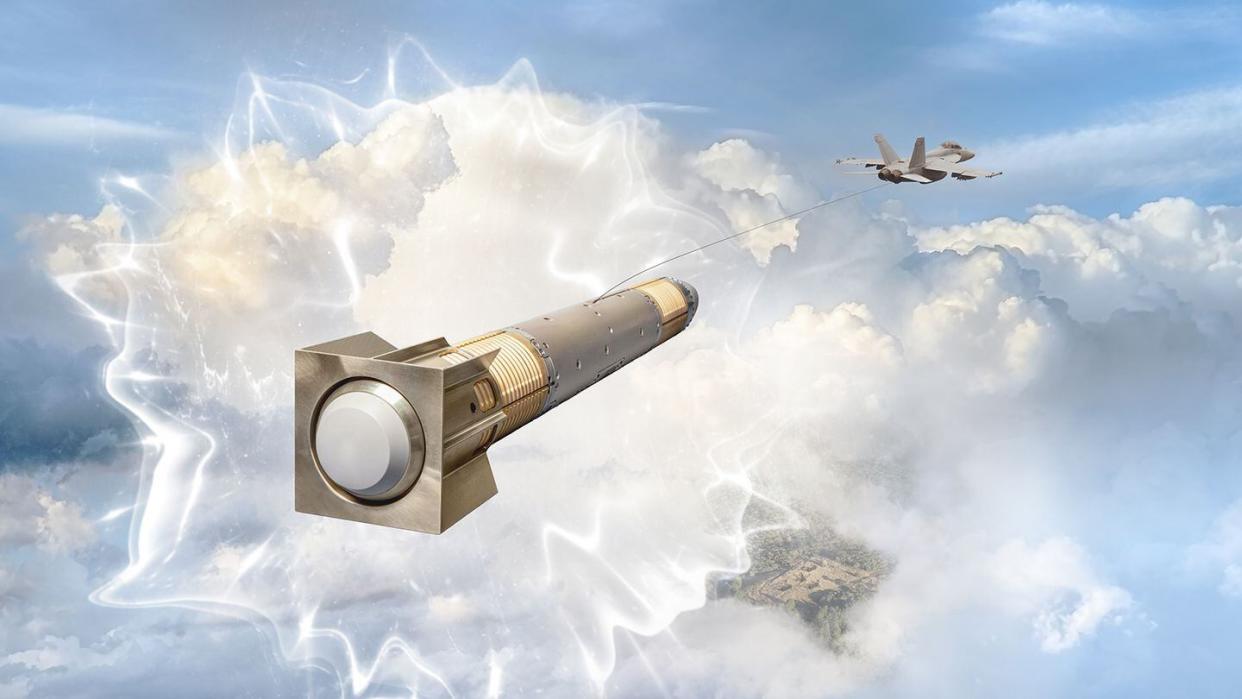Navy buys BAE Systems’ Dual Band Decoy to protect Super Hornet jets

BAE Systems said it will begin developing the Dual Band Decoys for U.S. Navy’s fighter jets, following a contract award last fall and a protest from competitor Raytheon.
The Navy awarded the company a $54 million contract in September to design and build the decoy, which the company says will be one of the most advanced radio frequency countermeasures in the world.
The system will consist of a towed unit connected by fiber-optic cable to electronic warfare equipment onboard the aircraft, BAE Systems said in a news release. The decoy is meant to lure missiles away from the aircraft and disrupt the enemy radars that target American jets.
The Navy in 2019 awarded both BAE Systems and Raytheon contracts to develop and demonstrate a decoy system. However, the service ultimately disqualified Raytheon from competing for the manufacturing contract, citing Raytheon’s hiring of a “retired Navy technical expert [that] gave rise to the appearance of impropriety,” according to documents from the United States Court of Federal Claims.
“Raytheon contends that the agency’s decision to exclude the firm from the competition because of an actual or apparent unfair competitive advantage resulting from the employment of a former government employee was unreasonable, and so delayed that it deprived Raytheon of any opportunity to mitigate the issue,” according to the Government Accountability Office decision.
GAO denied the protest in August, and the Navy awarded BAE Systems a contract in September. Raytheon moved its claim to the U.S. Court of Federal Claims, which in March ruled against Raytheon.
BAE Systems announced the contract May 15, with Don Davidson, director of the Advanced Compact Electronic Warfare Solutions product line at BAE Systems, saying the “Dual Band Decoy delivers broad capability that can be installed on a variety of aircraft and is upgradeable to address future threats.”
The new system will build on the AN/ALE-55 Fiber-Optic Towed Decoy, which was fielded around 2010. BAE Systems has since produced more than 3,000 ALE-55 decoys for customers around the world. The new decoy uses BAE’s custom integrated circuits that enable greater performance with reduced size, weight and power, the company stated.
The Navy has moved to make its Super Hornet fleet more survivable as enemy sensors and weapons grow more advanced. The Navy and Boeing developed a Block III design that features a reduced radar signature. Boeing is delivering new Block III jets and is also upgrading some Block II jets to the Block III configuration during their life-extension modernization periods.
BAE’s statement notes the decoy will be initially fielded on the Navy’s fleet of F/A-18E-F Super Hornets. The Navy has more than 500 of these planes in the inventory, but BAE Systems did not provide additional information on how many decoys this contract covers, nor did it provide information on the value of the contract or delivery timelines.

